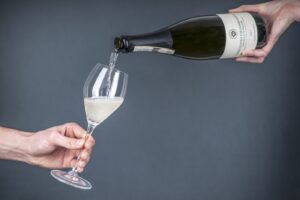If 2020 was the year in which, in order to survive, it was necessary to react, in 2021 the wine world will have to go back to planning, as much as possible. Everything depends on the distribution and administration of the Covid-19 vaccine, which should reach its peak in the middle of the year: from that moment, the world will finally be able to enter its new normality. In which, as told by the “State of the US Wine Industry 2021” edited by Rob McMillan, founder of the Silicon Valley Bank Wine Division, many things will have changed in the world compared to how we left it in early 2020. First, smart working, which will become a reality for millions of people, especially in the United States. And then, that process of gradually emptying cities, in favor of more suburban neighborhoods, will continue. Also, the e-commerce boom is something we’ll have to deal with for a long time, not a passing fad.
The very paradigm with which wine companies will have to face the market will change, especially the US market: what was good in 2019, will not be good in 2021, and those who were able to respond to the change in 2020 will still enjoy the benefits today. The weight of different distribution channels will change, with small stores and wine stores playing an important role. Restaurants will reopen, when restrictions will disappear, with local customers leading the way in wine cities: however, pre-Covid conditions will not return for years, provided they do. In the long term, the reopening of venues will obviously lead to a drop in purchases on the on premise channel, even if the restaurant model will be different: the focus will still be on delivery, rather than filling restaurants, and this for alcohol consumption is not a good thing.
Obviously, predicting the timing of mass vaccination is not possible, but to plan a budget, you have to try to make at least a plausible assumption. The green light before the summer will not come for sure, at least in the U.S., and in the meantime small businesses and the restaurant industry continue to deal with a tragic economic situation, poorly supported by the state. The forecasts for what will be the US market in 2021 according to the “State of the US Wine Industry 2021”, thus, start from an assumption, that is that the economy of the country will grow in parallel with the vaccination campaign.
Similarly, the pandemic has taught us to think about different business strategies that do not pass through a few narrow channels. There will be a fair amount of liquidity in the market, which will return to implement mergers and acquisitions between companies in the sector. Making a prediction, it can be hypothesized that the hospitality sector, in the United States, will see 25% of reopenings as of April 15th, a quota that will increase to 50% on June 15th, to 75% on August 15th and to 100% on October 15th. Wine sales will proceed slowly, to increase as restrictions are removed. Still, restaurants will need new investments, but wine consumption will not return to pre-Covid levels for years. Wine companies that have always relied on direct sales will experience a difficult first half of the year, but will then close the year on an upward trend. Retailers that already have an online presence will have a great year, and even the hospitality sector, driven by events that have been delayed for over a year, will fly again in the second half of 2021.
Looking at the production aspect, with the most miserly harvest since 2011 in the winery, bulk prices in California, the main US producer, will still be lower than the average of the last five years. Likewise, the market value of California vineyards, even in the best areas, will remain well below the prices of the last years. On the demand side, on the other hand, retired baby boomers, fortunately, do not seem ready to give up yet, even if with some filing, both in terms of quantity and average price. Purchasing power, of course, will increasingly be in the hands of the under-40s, the age group that will drive growth for the next decade: in the next five years, 27.9 million Americans will reach retirement age - 66 - while 30.3 million will turn 40, a shift in purchasing power too great to ignore. Meanwhile, Millennials are still not delivering the answers they hoped for, and the reasons are quickly stated. The 2007 recession stunted the growth and careers of a generation that still prefers craft beer and spirits. Price-wise, premiumization will continue into 2021, but average price growth in both home and away-from-home consumption is getting closer to its peak.
The heart of the Silicon Valley Bank report, however, is in the seven positive trends and seven adverse dynamics. Although 2020 represents a significant setback, it still leaves behind something good for wine companies. With smart working and restaurants closed, for one thing, wine is back on family tables for lunch and dinner, bought increasingly online. Working from home has also, in many cases, saved families money that will be spent over the course of 2021. Without the possibility to do a lot of things, in terms of fun and free time, many young people last summer approached wine, with outdoor classes and winery visits, proving to be interested and intrepid tasters. Wine once again proved to be recession resistant. While many people were stocking up on wine everyday at the supermarket, many consumers quickly switched to online, both because the offer is richer and because home delivery is more convenient and safe. Reason why many will continue to buy wine online even in the post Covid world. Another trend destined to last is the one of online tastings, mainly on Zoom. When tasting rooms were closed, moreover, phone sales made a comeback. Additionally, once there is clear success in defeating the virus, consumers will act on pent-up demand to celebrate in groups, which will likely increase alcohol consumption in 2021.
For seven positive trends, however, as mentioned, there are just as many opposing ones that the wine world will have to deal with, and try to solve. In the meantime, the channel of retail stores, which risk, with the reopening of bars and restaurants and the competition of large-scale distribution, to lose an important part of their business. The challenge of conquering younger, health-conscious and multicultural consumers, in order to respond to the aging of the average wine consumer, remains to be won. The two consumer groups have different values and spending patterns, the wine industry has done little to modernize its marketing message and attract or retain both. Wine is perhaps the only major consumer product without an industry marketing organization.
The anti-alcohol campaign continues to grow as guidelines from a wide variety of government and health organizations freely decry the findings of science to influence consumption, taxes and regulations. Examples include the recent effort to change the Usda’s dietary guidelines, which would have reduced the recommended number of daily drinks for men, and the renewed push to add cancer warnings to labels. Currently, there is no wine industry organization that can leverage the press and legislators by focusing people’s attention on the mountains of scientific research showing reduced mortality rates linked to moderate wine consumption. The wine industry is made up of an exceptionally fragmented landscape of producers with no industry marketing organization that can speak with one voice, provide data, or adequately leverage and support current consumer marketing trends.
Although 2020 has brought supply to a temporary equilibrium in most U.S. production regions, there are still too many acres of vineyards, and insufficient demand growth to maintain a fair return on grape prices. If total volume demand remains the same, or declines, there will be a need to replant, in part because abundant years are no longer welcome under these conditions. Companies still need to invest in direct sales channels other than the tasting rooms in the winery, they are really aiming at the online channel, which is still too little structured. Finally, always from a business point of view, the offer of work is getting more and more limited and the price of work is constantly increasing.
Copyright © 2000/2026
Contatti: info@winenews.it
Seguici anche su Twitter: @WineNewsIt
Seguici anche su Facebook: @winenewsit
Questo articolo è tratto dall'archivio di WineNews - Tutti i diritti riservati - Copyright © 2000/2026









































































































































































































